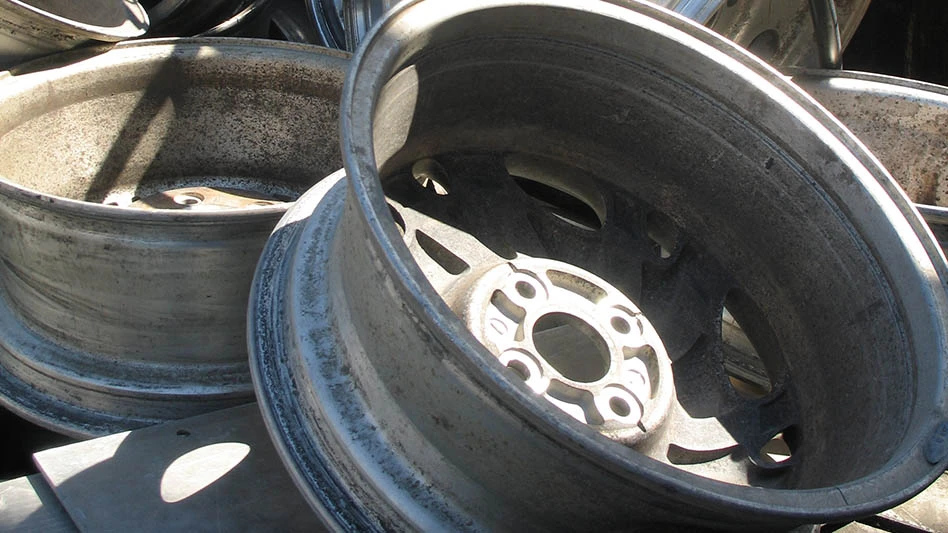 The National Waste & Recycling Association is a new name among national trade groups, but the organization draws upon more than 50 years of solid waste and recycling knowledge and experience.
The National Waste & Recycling Association is a new name among national trade groups, but the organization draws upon more than 50 years of solid waste and recycling knowledge and experience.
In November 2013, the former Environmental Industries Association (EIA) changed its name to the National Waste & Recycling Association and unified what had been three separate operating groups within EIA: the National Solid Wastes Management Association (NSWMA), the Waste Equipment Technology Association (WASTEC) and the EIA itself.
The renamed Washington, D.C.-based organization unveiled a new logo along with the new name. Among the four symbols within that logo, one symbolizes recycling and another waste-to-energy efforts, the group says.
As the National Waste & Recycling Association embarks on the first full calendar year under its new name, Recycling Today asked association President and CEO Sharon H. Kneiss for an update on the changes.
Kneiss offers insight into the thinking behind the name change and the activities of the National Waste & Recycling Association as it prepares to co-host WasteExpo 2014 in Atlanta April 28 to May 1.
Recycling Today (RT): The former Environmental Industries Association has recently changed its name to the National Waste & Recycling Association. What prompted the name change?
Sharon Kneiss (SK): The member leadership of the National Waste & Recycling Association decided to create a single association from our formerly separate groups (EIA, NSWMA and WASTEC). They thought it would be helpful as we communicate on behalf of the industry for it to be clearer who we are and what we do for prospective members, reporters, government officials and others. As part of the reorganization, they decided to rebrand the association with a single name that better represents the full membership and the modern waste and recycling industry.
The name they selected helps show the depth and breadth of the waste and recycling industry and helps showcase the industry as innovators in creating a better environment.
|
Slow down to get around The National Waste & Recycling Association (Waste & Recycling), Washington, D.C., has announced its support for legislation drafted by West Virginia State Sen. Donald Cookman that would require all drivers in the state to slow down to 15 miles per hour when passing a stopped sanitation truck. Senate Bill 378, the “Slow Down to Get Around Bill,” is intended to prevent road accidents and fatalities around sanitation trucks caused by careless drivers. After a hearing Feb. 20, 2014, the West Virginia Senate Judiciary Committee passed the bill on to the full state Senate for consideration. Cookman pushed for these reforms after a driver struck and killed a constituent—Jeremy Tabler, a sanitation worker from West Virginia’s Berkeley County—who was exiting his sanitation truck to collect garbage. Tabler is survived by his wife, who testified before the Senate Judiciary Committee, and two young daughters. “We want to prevent such tragedies from happening. It’s critically important, for everyone’s safety, to slow down to get around garbage trucks,” says Waste & Recycling’s Vice President for Advocacy David Biderman. West Virginia’s reforms echo calls for greater road safety nationwide, the association says. Similar laws have passed in Alabama, Michigan and Wisconsin. Waste & Recycling’s “Slow Down to Get Around” national campaign also reminds motorists to drive more carefully near solid waste collection vehicles. |
RT: What do you hope will be the positive effects of the change?
SK: Our research indicates that our new name should help alleviate confusion about who we are and facilitate communication from the National Waste & Recycling Association to various stakeholder groups about our industry.
In addition, a strong brand is critical to building operational capacity, galvanizing support and maintaining focus on our mission and vision—to be the most effective and respected voice on all things waste and recycling. Strong brands also help organizations build credibility, maintain strong staff and attract needed resources as well as build key partnerships.
RT: With the new name also comes a new logo. What is the significance of the four symbols that comprise the logo?
SK: The new logo for the National Waste & Recycling Association is made up of four individual icons that depict different aspects of the association’s membership and mission. The first icon is a trash cart that symbolizes collection and disposal as well as the equipment manufacturers and suppliers. The second icon is circular arrows that suggest recycling and our community advocacy efforts. The third icon is a leaf that represents composting and our commitment to the environment. The fourth icon is a stylized “spark” that represents waste-based energy production and the innovation that is a part of our industry.
RT: How have your member companies responded to the new name and logo?
SK: The reaction to the announcement of our new name and logo has been very positive. Many people have told us that they like the new name and the bright and attractive icons that make up the logo.
In coming months, we plan to roll out the new brand through all of our state chapters to local media and targeted government officials. I am confident these groups will react favorably to the new brand.
RT: The new logo includes waste to energy as a core activity of the association. To what extent have your member companies indicated to you that this industry sector is important to them?
SK: The strategic vision for our group is the creation of a merged advocacy organization with leadership, expertise and programs that promote the National Waste & Recycling Association as the most effective and trusted voice on all things waste and recycling, including the production of energy from waste.
RT: Based on your website and events schedule, safety seems to be an issue of considerable priority. How has the waste and recycling industry been faring in terms of safety? How can your association help members prioritize safety?
SK: The National Waste & Recycling Association has had a robust safety program for more than a decade. This fact has not changed with the reorganization or the rebranding.
Our association has been known for its “Slow Down to Get Around” public education program and our “Be Safe, Be Proud” industry educational materials. Last year, we released an updated version of our industry safety manual. Our weekly safety newsletter is available in both English and Spanish. Other waste and recycling associations use this newsletter to promote safe work practices to their members. We plan to hold industry safety training events in a number of cities around this country this year. We are the official ANSI (American National Standards Institute) body for equipment for our industry.
These and other efforts have been successful in reducing industry accidents, injuries and fatalities. But we are committed to building on this success … We are building a strong certification program and working to expand the education opportunities that we offer.
Waste and recycling companies that aren’t taking advantage of these programs should contact us to ask how we can help them reduce their liabilities and keep their employees safe.
RT: As you look at the future of the waste and recycling industries in North America, what do you see as a foremost challenge? Where do some of the opportunities lie?
SK: This is a period of transition for our industry. It seems clear that opportunities and challenges exist that will affect our businesses as we continue to divert more waste from traditional disposal, create more energy from waste, etc.
I am confident that the National Waste & Recycling Association will continue to foster a business environment for our industry where individual companies have the best opportunities to prosper.
RT: What is the National Waste & Recycling Association’s role in planning WasteExpo 2014 and what are two or three good reasons why a recycling company manager should attend?
SK: The National Waste & Recycling Association and Penton Media/Waste360 work together to offer the waste and recycling industry a superior WasteExpo trade show and education offerings. The association and Penton also work together on other products and services that benefit the association’s members and Penton’s customers.
In addition to the vibrant show floor and popular established events and educational programming, this year organizers are adding lots of fresh content and activities, including:
- a Coca-Cola bottling plant tour and discussion on Coke’s global sustainability program;
- sessions on handling difficult-to-recycle products, such as glass and mattresses;
- an expanded truck safety inspection event;
- risk management and safety sessions;
- sessions on building recycling programs for commercial facilities and multifamily housing; and
- an “Ask the Expert” session.
WasteExpo 2014 will be held in Atlanta from April 28 to May 1. You can learn more about it at www.wasteexpo.com. (See page 116 for a interview with Penton’s Liz Bothwell about the event.)
Sharon H. Kneiss is president and CEO of the National Waste & Recycling Association. She can be contacted via email at skneiss@wasterecycling.org.

Explore the April 2014 Issue
Check out more from this issue and find your next story to read.
Latest from Recycling Today
- RMDAS April figures show recycled steel price setback
- Steer World offers PEX plastic recycling machine
- New recycling grant program launches in Massachusetts
- Tire Recycling Foundation names executive director
- Dock 7 named 2025 Exporter of the Year at New Jersey International Trade Awards
- Waste Connections reports ‘better than expected’ Q1 results
- Commentary: How EPR is transforming the packaging industry
- Acerinox names new North American Stainless CEO





